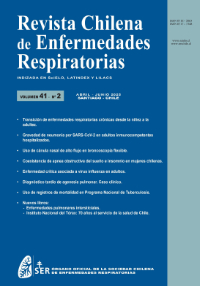Obstructive sleep apnea and comorbid insomnia in Chilean women
##plugins.themes.bootstrap3.article.main##
Abstract
Obstructive sleep apnea (OSA) is a heterogeneous disorder characterized by recurrent upper airway collapse during sleep. Its clinical presentation is variable and frequently coexists with other sleep disorders, particularly insomnia. The co-occurrence of OSA and insomnia, referred to as comor- bid insomnia and sleep apnea (COMISA), has recognized clinical significance. Objective: To clinically characterize women with OSA evaluated at a tertiary care center, comparing those with comorbid insomnia (COMISA group) to those with OSA alone. Methods: Prospective observational study inclu- ding women aged > 18 years with a confirmed diagnosis of OSA (apnea-hypopnea index > 5 events/ hour). Insomnia symptoms were assessed using the Insomnia Severity Index (ISI); scores > 8 indicated clinically significant insomnia. Results: A total of 103 women with OSA (median age: 56 years) were included. Insomnia was identified in 86% ofparticipants based on ISI scores. Moderate to severe OSA was present in 69%, and 82% were classified as obese. Compared with those without insomnia, the COMISA group exhibited more severe depressive symptoms and greater daytime sleepiness. Conclu- sion: Insomnia is highly prevalent among women with OSA and is associated with increased symptom burden. Our findings underscore the needfor a comprehensive management approach that addresses both conditions to optimize clinical outcomes.
##plugins.themes.bootstrap3.article.details##
sleep apnea, obstructive, insomnia, depression, dyssomnias

This work is licensed under a Creative Commons Attribution-NonCommercial 4.0 International License.







